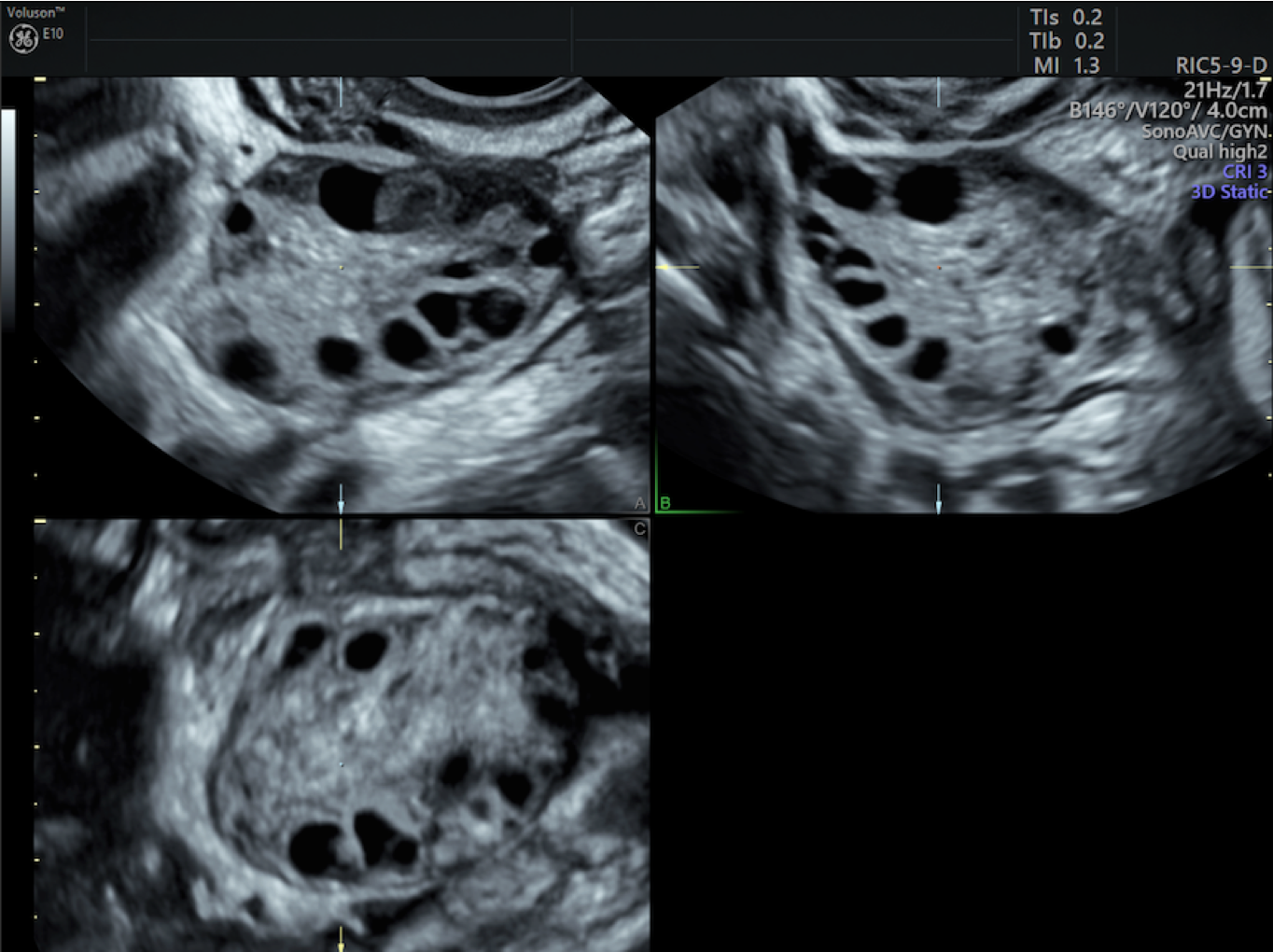Polycystic ovary syndrome (PCOS) affects about 1 in 10 women of childbearing age, according to the Office on Women's Health. Most women first receive a diagnosis in their 20s or 30s, but the condition can affect adolescents as well.
PCOS treatment focuses on managing symptoms to ensure that patients reach the best health outcomes. An accurate diagnosis and a detailed assessment of symptoms are both key to recommending appropriate options for each PCOS case.

3D MPR of ovary demonstrating PCOS
Hormonal Birth Control and Anti-Androgens
Combination birth control is a popular PCOS treatment. Whether it takes the form of the pill, ring, patch or another delivery method, birth control is a first-line PCOS treatment for young patients who are not looking to get pregnant. Contraceptives help regulate menstrual cycles and alleviate acne.
Some patients may also choose to pursue treatment for hirsutism, commonly a symptom of PCOS. When birth control does not adequately control hair growth, or when patients prefer not to take birth control, anti-androgen medications may help reduce hair growth.
Managing Insulin Resistance
Many people with PCOS also struggle with insulin resistance. Metformin is sometimes prescribed to control insulin levels and stimulate ovulation. Because of the increased risk of insulin resistance, women with PCOS may be more likely to gain weight, especially around the midsection. Being overweight can exacerbate symptoms, so encouraging patients to follow a balanced diet and exercise regularly is just as important as medication for managing the condition.
Stimulating Ovulation
Women with PCOS often have trouble with ovulation, making it difficult to get pregnant spontaneously. Clomiphene citrate is a common hormonal medication used to stimulate ovulation in women with PCOS. Gonadotropins — injectable hormones commonly used during in vitro fertilization — are another primary option for inducing ovulation.
Ovarian Drilling
Between 15 and 40 percent of women do not ovulate even after taking clomiphene, according to a 2019 Cochrane review. If other treatments fail, ovarian drilling may be a final option to induce ovulation. This may be performed as a laparoscopic procedure or by ultrasound guided transvaginal ovarian needle drilling. Both procedures involve puncturing the thick outer layer of the ovary. This is thought to reduce testosterone levels, spurring the ovaries to release an egg.
Ovarian drilling poses similar risks to other minor gynecological surgeries, and it may still take months to become pregnant. The results of ovarian drilling are not permanent — irregular menstrual cycles will return over time. The procedure should only be suggested for women with PCOS and infertility who have not responded to other medications.
Over time, the patient's symptoms may change, or they may shift their priorities if they decide to try to get pregnant. Continue to monitor symptoms and adjust treatments as needed to find the right combination for each person.





